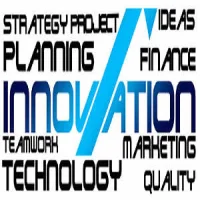“Forward thinking” is becoming a buzzword in business; in fact, the phrase is often included in the core values or vision statements of many organisations — both big and small. An innovation expert clarifies that forward thinking is more than a generic phrase. It describes how organisations proactively look toward the future to identify opportunities, says Lisa Bodell, the founder and CEO of futurethink.
In an article appearing in strategy+business, Bodell lists specific tactics that can help organisations capitalise on future trends:
Go micro. Campbell Soup Company uses an internal programme called Culinary Trendscape to provide insights for the company’s product development teams. The Trendscape team analyses microtrends observed through vendor partners, cookbooks, blogs, specialty food shops, restaurants, as well as cultural influences across the globe. Flavour and texture predictions are compiled into an annual report and used to inform new offerings.
In your own organisation, designate one team member to represent each relevant department for a once-a-month meeting in which microtrends are presented and discussed. Trend predictions gleaned from this group should be submitted to the innovation team/decision makers.
Conduct annual scenario planning. Map the key trends and driving forces that could impact your business, including economic, political, technological, legal, societal, and industry-specific trends. Describe each trend, as well as how and why it will affect your organisation. Look for uncertainties: wild-card factors that could derail current plans (eg, an environmental disaster or tighter industry regulation). Define two to four scenarios based on the trends and uncertainties you’ve identified. Include a mix of best- and worst-case scenarios. Then assess what your business can do now to prepare for these scenarios.
Make the future tangible. Task your product team with identifying key social, technological, economic, environmental, and political (STEEP) forces that will likely impact your organisation. The STEEP list can be used as a tool to generate forward-thinking ideas from the company at large.
Retain a technology scout. Technology scouting is a systematic means of identifying emerging technologies or applying established technologies in new ways. If you don’t have the budget to retain scouting services, identify a current employee who is imaginative and has a track record for making unexpected connections. This individual should have a technical background, broad experience within the company, and a vast network of contacts in diverse industries.
Tap into academia. Academic innovation can be disruptive, Bodell says, yet only a small fraction of universities in Europe and America have research partnerships with the private sector. To get ahead of the competition, start by outlining your long-term business objectives that could be served through collaboration with a university.
Source: strategy+business
Image credit: Pixabay
In an article appearing in strategy+business, Bodell lists specific tactics that can help organisations capitalise on future trends:
Go micro. Campbell Soup Company uses an internal programme called Culinary Trendscape to provide insights for the company’s product development teams. The Trendscape team analyses microtrends observed through vendor partners, cookbooks, blogs, specialty food shops, restaurants, as well as cultural influences across the globe. Flavour and texture predictions are compiled into an annual report and used to inform new offerings.
In your own organisation, designate one team member to represent each relevant department for a once-a-month meeting in which microtrends are presented and discussed. Trend predictions gleaned from this group should be submitted to the innovation team/decision makers.
Conduct annual scenario planning. Map the key trends and driving forces that could impact your business, including economic, political, technological, legal, societal, and industry-specific trends. Describe each trend, as well as how and why it will affect your organisation. Look for uncertainties: wild-card factors that could derail current plans (eg, an environmental disaster or tighter industry regulation). Define two to four scenarios based on the trends and uncertainties you’ve identified. Include a mix of best- and worst-case scenarios. Then assess what your business can do now to prepare for these scenarios.
Make the future tangible. Task your product team with identifying key social, technological, economic, environmental, and political (STEEP) forces that will likely impact your organisation. The STEEP list can be used as a tool to generate forward-thinking ideas from the company at large.
Retain a technology scout. Technology scouting is a systematic means of identifying emerging technologies or applying established technologies in new ways. If you don’t have the budget to retain scouting services, identify a current employee who is imaginative and has a track record for making unexpected connections. This individual should have a technical background, broad experience within the company, and a vast network of contacts in diverse industries.
Tap into academia. Academic innovation can be disruptive, Bodell says, yet only a small fraction of universities in Europe and America have research partnerships with the private sector. To get ahead of the competition, start by outlining your long-term business objectives that could be served through collaboration with a university.
Source: strategy+business
Image credit: Pixabay
Latest Articles
healthmanagement, innovation, planning, technology, forward thinking, organisation
“Forward thinking” is becoming a buzzword in business; in fact, the phrase is often included in the core values or vision statements of many organisations — both big and small. An innovation expert clarifies that forward thinking is more than a generic ph










